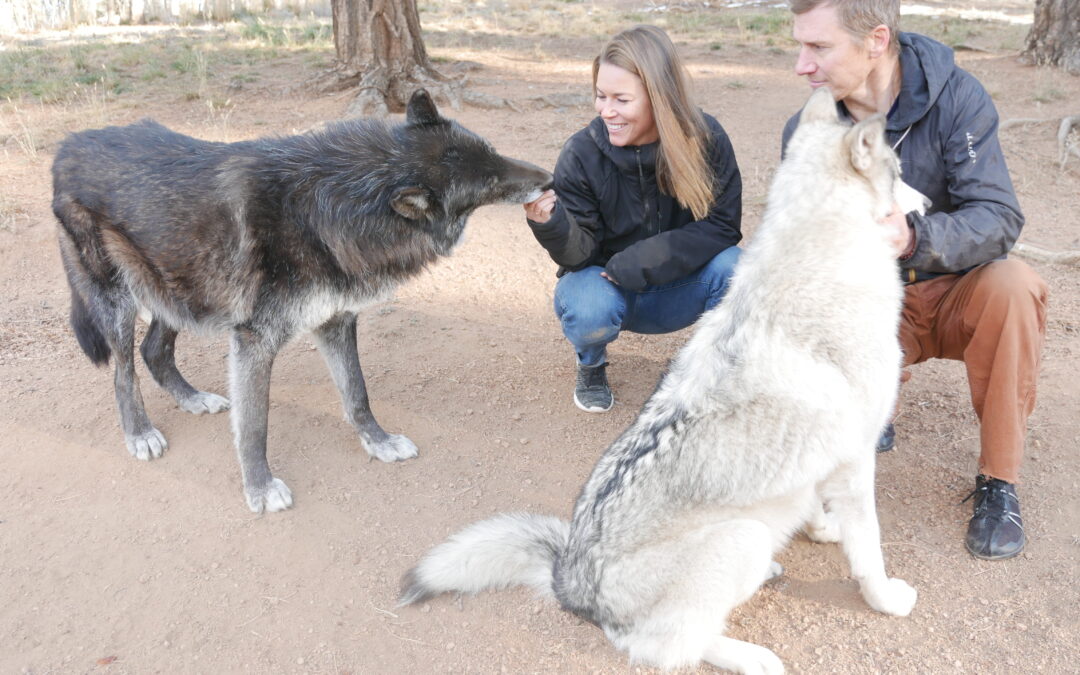FEAR OF LOSS – STATISTICS
For cattle and calves, the total combined head in each of the 4 states was the following (data from 2015):
-
- Colorado: 3.35 million
- Non-predatory losses: 58,840 cattle and 51,080 calves
- Predatory losses: 1,160 cattle and 3,920 calves
- Killed by wolves: .0007%
- Idaho: 3.02 million
- Non-predatory losses: 40,100 cattle and 48,950 calves
- Predatory losses: 900 cattle and 3,050 calves
- Killed by wolves: .04%
- Montana: 3.995 million
- Non-predatory losses: 25,070 cattle and 55,660 calves
- Predatory losses: 930 cattle and 6,340 calves
- Killed by wolves: .02%
- Wyoming: 1.88 million
- Non-predatory losses: 11,380 cattle and 24,220 calves
- Predatory losses: 620 cattle and 2,780 calves
- Killed by wolves: .03%
- Colorado: 3.35 million
For sheep and lamb, the total combined head in each of the 4 states was the following (data from 2019):
-
- Colorado: 425,000
- Non-predatory losses: 4,600 sheep and 6,400 lambs
- Predatory losses: 7,400 sheep and 10,600 lambs
- Killed by wolves: less than 100 sheep and less than 100 lambs
- Idaho: 230,000
- Non-predatory losses: 6,160 sheep and 4,150 lambs
- Predatory losses: 8,400 sheep and 4,850 lambs
- Killed by wolves: 40 sheep and 440 lambs
- Montana: 200,000
- Non-predatory losses: 7,900 sheep and 6,400 lambs
- Predatory losses: 3,100 sheep and 10,600 lambs
- Killed by wolves: 100 sheep and 200 lambs
- Wyoming: 340,000
- Non-predatory losses: 8,400 sheep and 6,400 lambs
- Predatory losses: 3,600 sheep and 7,800 lambs
- Killed by wolves: 100 sheep and 100 lambs
- Colorado: 425,000
*Non-predatory losses, as defined by both NASS and APHIS, encompasses the following forms: assorted diseases, lameness/injuries, weather, calving-related problems, poisoning, age, theft, other non-predatory causes, and unknown other non-predatory causes.
*Predatory losses encompass the following animals: grizzly bears, black bears, bobcat/lynx, coyote, dogs, foxes, wolves, predatory birds, mountain lions, other predators, and unknown predators.
FEAR OF THE BIG BAD WOLF
- “The mythic wolf,” said Matt Barnes, a rangeland scientist with the Northern Rockies Conservation Cooperative (NRCC) who also served on the CPW Stakeholder Advisory Group, “is the greatest enemy of the real wolf.”
- Gulliford was much more blunt in his view of the wolf and its history with humans. “We hate wolves because they’re like us,” he said. “We hate wolves because they have a social system, and they clearly have families, and they mate for life. Native peoples have always respected wolves, and wolves were powerful symbols and are powerful symbols. But, for Euro-Americans, wolves were just competition.”
- “Make the West safe for livestock, kill off the predators. They’re dangerous; they’re bad. We use them in our folklore to personify evil or personify characteristics that we do not like in our fellow human beings.”
- The push to eradicate wolves was “almost on a religious level.” “It’s this whole idea of human dominion over nature that was very much acted out in the history of the Western frontier,” he said.
FEAR OF LOSING LAND
- “It’s not primarily about the money. You might even say it’s not really about the animals themselves but the deeper, philosophical issues,” he said. “To those ranchers, this should not be happening. This is moving backwards. It’s undoing the progress of their ancestors.”
- Many of the ranchers in Colorado own the critical wildlife habitat, which is private land located at lower elevation, and their summer pastures — the public land allotments where livestock graze — are in higher elevation pastures. And if ranchers are pressured off these allotments, many of them do not have another place for their livestock.
- Wolves being added to Colorado just creates not only more competition for these public lands, but also more pressure on the pasture that the livestock — more in the case of cattle than sheep — graze on. When the cattle become scared, they bunch up and are unwilling to move on; they then start trampling the ground in that area, which is overutilization. With that, the U.S. Forest Service says that livestock must be removed from the grazing allotment, she said.
Original article written by Jonathan Bowers, The Aspen Times
Read the full article: https://www.postindependent.com/news/whats-behind-the-resistance-to-wolves-in-colorado/

